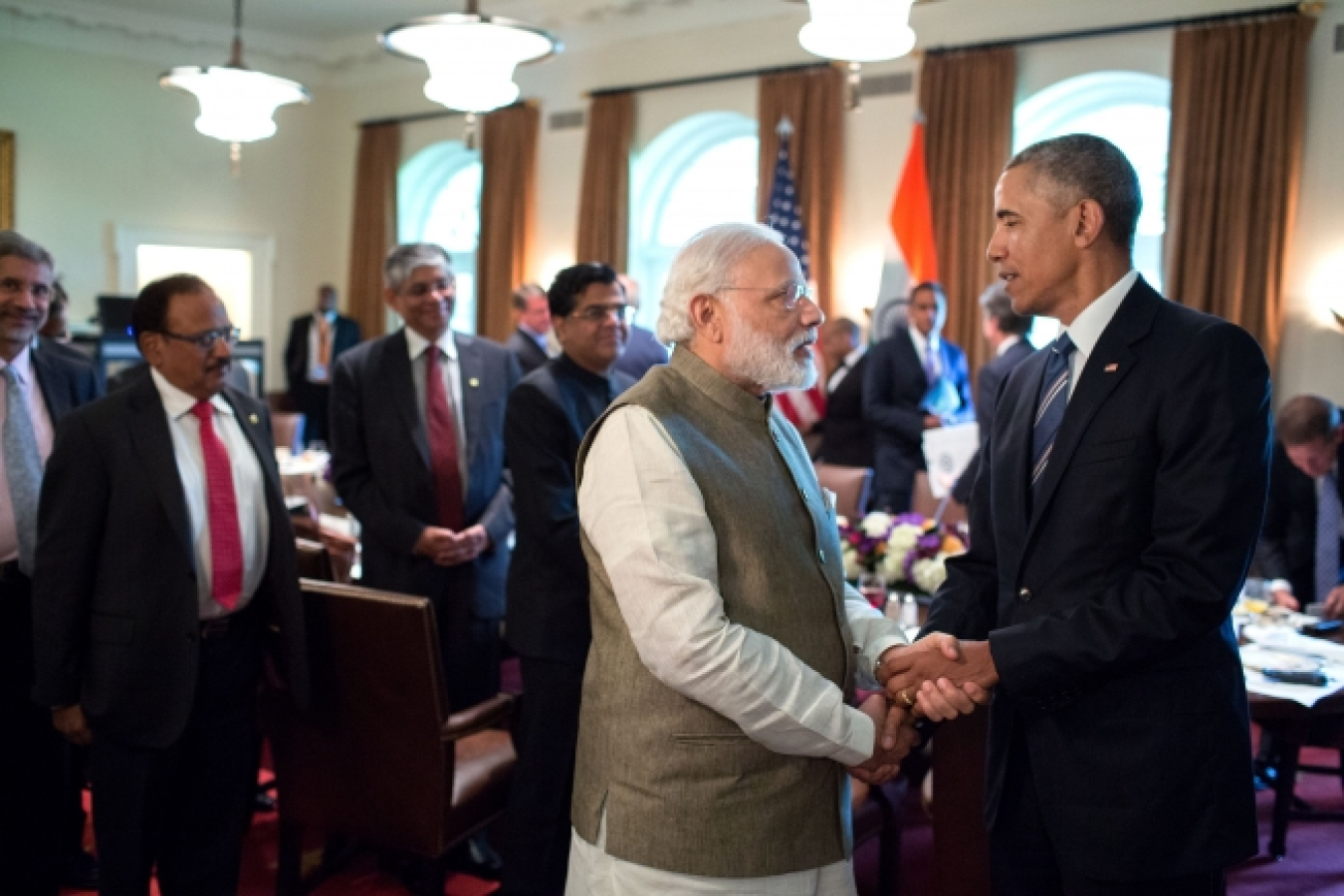When President Obama and Indian Prime Minister Modi met earlier this month, they pledged to show global leadership in the fight against climate change and reaffirmed their commitment to collaboratively support India’s ambitious goal to deploy 175 gig...
Office of Critical Minerals and Energy Innovation
June 23, 2016
President Barack Obama and Prime Minister Narendra Modi of India talk after a working lunch in the Cabinet Room of the White House, June 7, 2016. (Official White House Photo by Pete Souza)
When President Obama and Indian Prime Minister Modi met earlier this month, they pledged to show global leadership in the fight against climate change and reaffirmed their commitment to collaboratively support India’s ambitious goal to deploy 175 gigawatts of renewable energy, including 100 gigawatts of solar, by 2022.
India is primed for rapid clean energy expansion, with its abundance of sunshine, growing population, and its government’s vow to provide reliable electricity to all. These factors, combined with India’s commitment to reduce its emissions and Prime Minister Modi’s solar goal, have led the U.S. Department of Commerce to rank India as the second most attractive market for U.S. solar exports.
To underpin further development of that market, the Energy Department’s National Renewable Energy Laboratory (NREL) and India’s National Institute of Solar Energy are collaborating to enhance the quality and accuracy of India’s solar resource maps and data. This effort is part of an ongoing project led by the Energy Department’s Office of Energy Efficiency and Renewable Energy (EERE) under the U.S.-India Partnership to Advance Clean Energy (PACE) and the U.S.-India Energy Dialogue.
Solar radiation data is used in a number of applications, including financial models to estimate potential revenue of solar projects. By comparing high-resolution solar resource data at various locations, solar developers are able to identify, and secure investment in, the most promising sites for solar photovoltaic and concentrating solar power projects in the country.
As part of this project, NREL released updated satellite-based solar radiation data for India in March 2016. The update provides 15 years of hourly solar radiation data and incorporates improved information on aerosols such as dust, smoke, haze, and particulates that can partially block solar irradiation. Developers can now access the updated dynamic maps and data in a geographic information system format through the This was an empty link: National Solar Radiation DatabaseNational Solar Radiation Database, a free, online platform.
To ensure solar developers throughout India have the knowledge necessary to access the data and leverage it in financial analyses, EERE International, in partnership with India's Ministry of New and Renewable Energy and Department of Science and Technology, sponsored three workshops in India on Solar Resource Assessment and Solar Project Development. The workshops featured experts from NREL and research institutions in India affiliated with the Solar Research Institute for India and the US (SERIIUS). Presentations from the workshop are available for download.
In continued support of President Obama’s and Prime Minister Modi’s commitment to clean energy and climate change, EERE plans to build on this successful collaboration. Next, NREL’s researchers plan to incorporate data from ground stations in India and add new satellite data as it becomes available to enhance these solar resource maps and data sets. Experts in the United States and India also plan to expand their collaboration to further facilitate the use of solar resource data in performance and financial analysis by adapting NREL’s System Advisor Model (SAM) to allow for greater applicability in India. Together, these collaborations are laying a strong foundation for a robust solar market in India.

